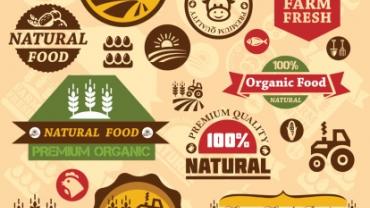
“Shop along the perimeter of the supermarket and avoid the middle aisles.”
This is the advice medical and nutrition professionals frequently give people who are looking to lose weight or simply improve their overall health and wellbeing. On balance it’s pretty good advice. After all the perimeter is where the fresh and unprocessed foods are found: vegetables and fruit; meat poultry and seafood; and dairy products. Of course that’s also where the bakery is but presumably it goes without saying that most people will fare better avoiding cookies muffins and other refined carbohydrates.
And of course there are some not-so-good things lurking along the perimeter. Sure there are all the makings of a great salad but nearby you’ll also find potential add-ins such as sweetened dried cranberries and crispy deep-fried tortilla strips which can spell salad sabotage. Remember too that there are plenty of good things hiding among the “edible food-like substances” in those dastardly middle aisles. That’s where you’ll find the tea nuts dark chocolate and packaged/canned seafood.
What all of this means is giving advice to people on what to look for when food shopping isn’t easy. Even the buzzwords and sound-bites that should point them toward better choices can’t always be trusted. Food manufacturers’ use of slick marketing tactics to capitalize on the trends of the day means that the phrases “organic” “all natural” “gluten-free” “artisanal” and “fair trade” may lead people far astray from the nutritious foods we would prefer to see them eating.
Words like these anoint food products with what some nutrition professionals call “health halos.” They provide consumers with a false sense of safety regarding the wholesomeness and health benefits of packaged foods. They are junk foods dressed up as something healthful and pure and a look at their ingredient lists proves they are nothing but wolves in dietary sheep’s clothing. Take yogurt as an example. While the saturated fatty acids found in dairy have been shown to have beneficial effects on cardiometabolic risk factors it’s difficult to find full-fat (whole milk) yogurt among the enormous selection of fat-free and low-fat versions. Packages are emblazoned with “good source of calcium” but they would be equally correct if they were advertised as a “good source of sugar aspartame and artificial coloring.”
Granola is another example of a food that may be fine in its simple state: rolled oats nuts and perhaps a small amount of honey or brown sugar. But granola that’s now advertised as organic all-natural artisanal or small-batch may come loaded with multiple natural sweeteners dried fruit and other additives so that a food that was already carbohydrate-dense and suitable mostly as a snack for those engaged in strenuous activities has become little more than glorified candy and probably not a wise choice for people doing sedentary work.
Healthcare professionals can help individuals looking to eat better by explaining that organic non-GMO junk food is still junk food. Non-GMO beet sugar and “organic evaporated cane juice” are still sugar and the human pancreas doesn’t know the difference between these and refined white table sugar. A gluten-free brownie made with fair trade cocoa powder organic amaranth flour and cage-free eggs is still a brownie and gluten intolerance or not these selling points are not free license to consume an unlimited number of them. Higher quality treats are still treats and should be viewed as such.
All this being said there may still be a place for these foods in the diets of people who are transitioning to a healthier lifestyle. They can be used as a stepping stone to help them make the adjustment from their former favorites to somewhat healthier versions. Ideally over time they would completely eliminate or at least drastically cut back on consumption of these processed foods altogether—organic or not “all natural” or not. It may do someone’s heart and mind good to know that their food dollars support fair trade organic farming and food companies that are meeting the needs of those with food sensitivities and intolerances. We should not dismiss the importance of people shopping and eating in accord with the economic and social causes they believe in. Ultimately however foods that sport health halos may be just as detrimental to one’s waistline and overall health as their less pristine counterparts.